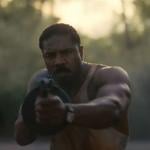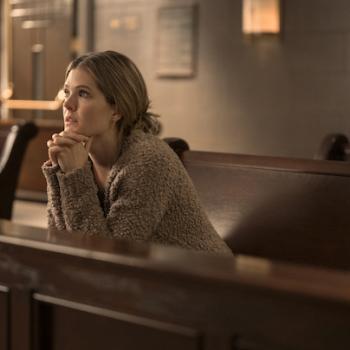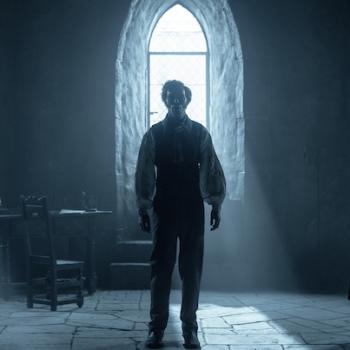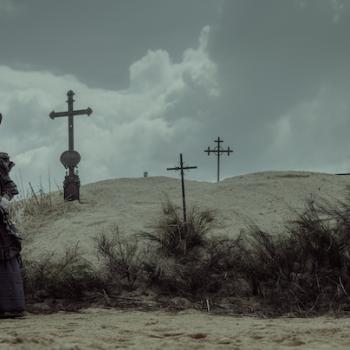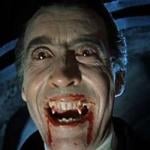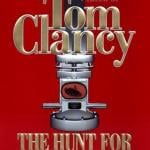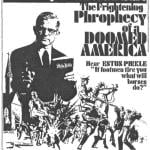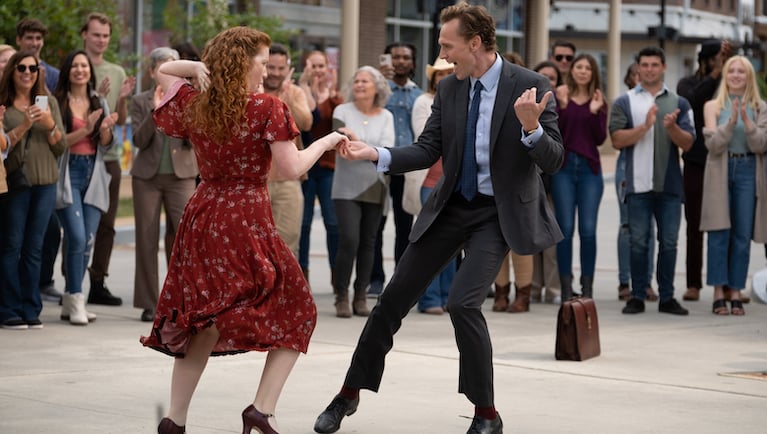
The Life of Chuck hasn’t exactly set the world on fire since its release earlier this month. But while it might not be among 2025’s biggest films, it could be one of its best.
Granted, this was never crafted to be a box-office blockbuster. It’s just too contemplative, too whimsical, too flat-out weird. The whole story is told backward, for one thing—beginning with Act III, which itself seems to culminate with the end of the world. And much of the “action,” such as it is, centers around dancing.
Nope, The Life of Chuck isn’t for everyone. But I loved it. And Director Mike Flanagan—the man behind such gory horror Netflix adaptations as The Haunting of Hill House and The Fall of the House of Usher—says that this quiet, quirky movie is “my favorite thing I’ve ever worked on.”
“We were making something that we hoped would outlive us,” Flanagan said at a virtual press conference I attended, “and I hope that it does.”
I hope so, too. Even though the film (based on a book by Stephen King) is predicated on death and endings, The Life of Chuck is full of vitality, hope and joy. It sugarcoats nothing, and yet manages to remind us of how sweet life can be.
The Life of Chuck is not a particularly religious work. You can think of it as a humanistic fable, one that explores life’s hardest questions and most difficult moments in ways that might give meaning to even the most secular viewer. But I think the faithful can glean meaning from the film, too. Let’s walk through it and see.
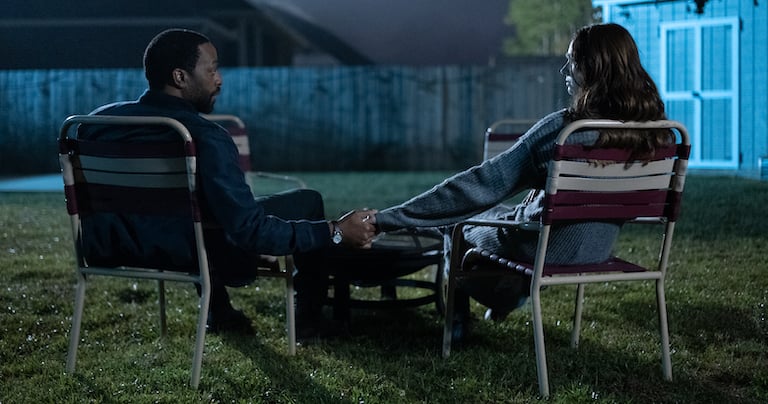
Act III: Find Connection
The first time we see Chuck (played by Tom Hiddleston), he’s on a billboard.
“Charles Krantz: 39 Great Years,” it reads. “Thanks, Chuck!”
Who is Chuck? No one seems to know. A schoolteacher named Marty (Chiwetel Ejiofor) asks around, but everyone is just as mystified as he is. Even as his name and face appear in evermore places—TV ads, graffiti, a bit of skywriting—no one has any clue as to why “Chuck” is suddenly popping up everywhere. Granted most folks have more serious matters to consider, what with the world ending and all.
“Our man Krantz is the Oz of the apocalypse,” someone says. The man behind the curtain.
Is the world ending? It sure seems so. Chunks of California are falling into the ocean. Sinkholes are swallowing cars. The internet is glitching something awful, and it seems like just a matter of time before it goes out altogether.
Marty tries to keep his students focused. He tells their parents that their kids still need to work to get into college. But as the days roll on, fewer people seem to believe it.
And then, as the world gets ever more wobbly, something strange happens: People—especially Marty—begin to seek connection. Not a more reliable internet connection, but a connection to people. As he wanders through town, the streets oddly deserted, Marty talks with the people he meets—strangers—and has surprisingly deep, peaceful, conversations with them.
In the press conference I attended, Hiddleston said that the movie posed an “interesting question on the quality of our connections.”
Hiddleston said, “We lean on our technologies which are simulating real connection, but not the substance of real connection.” As the world gulps its last breaths, texts and social media posts just don’t quite get it done. The movie tells us that we need to be with each other. To stare into another human face, to touch another human hand.
And it’s not just connection that we long for, The Life of Chuck suggests. We hunger for reconciliation—to be with the people we love more than anything, even if they’ve hurt us or we’ve hurt them. In one of the movie’s sweetest wrinkles, Marty seeks out his ex-wife. He wants to spend the world’s last moments with her.
We were created for community. We were built for communion—not just with God, but with each other. Technology allows us all to connect in some amazing ways, but it can’t replace that near-sacred real space when we’re together.
When the Bible was written, texting or posting wasn’t an option. But even so, the Scriptures offer plenty of exhortations to spend time together. Hebrews 10:25 tells us, “Not neglecting to meet together, as is the habit of some, but encouraging one another, and all the more as you see the Day drawing near.” The characters in The Life of Chuck felt that verse hit home.
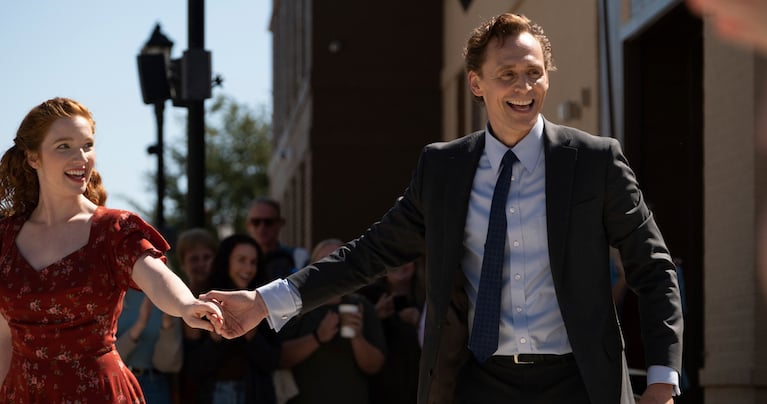
Act II: Find Joy
It’s only in Act II that we meet Chuck in earnest. He’s married, and we’re told that he’s devoted to his wife. He’s got a teen son, too. And he’s an accountant. He’s at a banking conference when we make Chuck’s acquaintance.
We also learn that he has brain cancer—though he doesn’t know it just yet. Chuck has just nine months to live.
Two other characters make their way into the story now: Janice Halliday has broken up with her boyfriend and is none-too-pleased with how the relationship went down. Taylor busks for a living: She’s set up her drum set not too far from where Chuck is beginning to walk down the street.
Chuck nearly walks right past Taylor. But instead, he feels the pull of the rhythm. To the surprise of everyone—even himself—he begins to dance.
And what a dance. A crowd gathers, including Janice. Soon, she’s swept into Chuck’s impromptu performance, and the two dance as if they’ve been partners for years.
The Life of Chuck features an old-fashioned narrator (Nick Offerman). He gives us a preview of what awaits Chuck not so long after that dance: That, as the cancer took ever-greater hold on Chuck and the pain grew evermore severe, Chuck would sometimes wonder why God bothered with creation at all.
But when Chuck remembers the dance, he knows exactly why God bothered. The unfettered bliss he experienced in that moment justifies it all.
Act II encompasses just a few short hours in Chuck’s life. The dance itself lasts, perhaps, 15 minutes. And yet it’s the emotional core of the film—a curious, climactic exclamation point in the middle of this cinematic story.
At the press conference, Hiddleston talked about the “magic in those small moments,” moments that become the “brightest stars in our memories in the last moments of our lives.”
“Rejoice in the Lord always,” Paul writes in Philippians 4:4. “Again I will say, rejoice.” Paul was writing to oft-persecuted Christians living hard, sometimes dangerous lives—and Paul has the audacity to tell them to rejoice.
But in this world of trouble, we’re given so many reasons to rejoice. We’re given those small, magic moments that make our suffering ebb, even for a time.
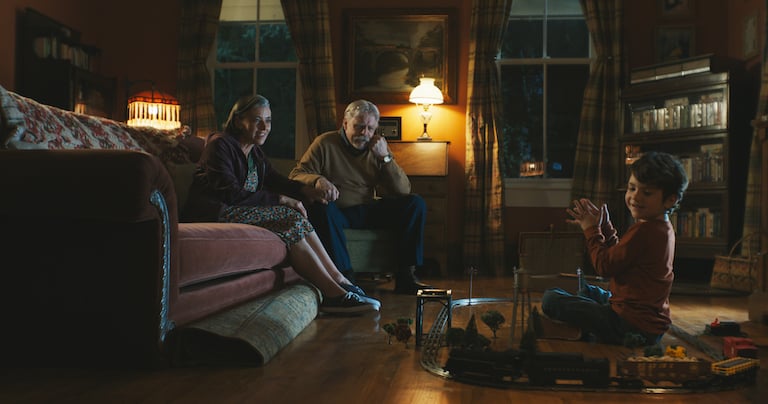
Act I: Find Meaning
As the movie nears its paradoxical Act I end, we see—finally—who Charles Krantz truly is, and how he came to be. We meet Chuck as a child. He’s an orphan, with a tragic car crash claiming his parents’ lives when the kid was just 6 years old. But this movie consistently finds hope and joy in the midst of despair. Young Charles finds that hope in his grandparents.
Chuck’s grandmother (Mia Sara) loves music—a love she joyfully passes on to her grandson. The two spend many an afternoon dancing in the kitchen, Chuck honing his skills with each twirl on the linoleum. And even after she dies, Chuck’s love of music and dance lives on—and in a way, so does his grandmother.
Chuck’s grandpa’s passions lie not on the dance floor, but in the spreadsheet. And when a teenage chuck says that he wants to make music his career, Grandpa (played by Mark Hamill) points him instead toward accounting. Music is beautiful, Grandpa concedes—but math can be beautiful, too. While the passions of the heart may mislead, math always tells the truth. And, Grandpa says, it can even predict the future.
And what does math tell about Chuck’s future? That, mathematically, the odds are astronomical that Chuck can make a good living by being a rock-and-roll musician.
Some might think that Chuck’s grandfather was just an old, grumpy wet blanket—snuffing out the boy’s dreams and undermining a what-could-have-been future. But I don’t think Stephen King or Mike Flanagan or the movie itself offers such a dour judgment on the guy.
After all, Grandpa is right: It is hard to make a career in music. And while Chuck’s a great dancer, he’s legitimately great with numbers, too. Why not find the joy in them? Why not use that skill (which, let’s face it, is in far greater demand) to build a life?
And Chuck builds that life, without ever giving up his love of music. We’re told that throughout college, he also led a rock band and spent plenty of sets dancing joyfully across the stage. And while accounting may not be the sexiest career out there, it formed the bedrock for building a family.
Chuck didn’t abandon music: He embraced it, but he wrapped his head and heart around other elements of himself, too. He found meaning in math, music, family and all the rest. He grew up.
Again, Hiddleston had something to say about that at the press conference.
“We should never submit to the reduction that we’re just one thing,” he said. “Inside that human being is greater breadth and depth and range than you could possibly imagine.”
For most of us, life is a balance of passion and duty. We do what we need to do in order to do the things we want to do. But a funny thing sometimes happens: The duties and drudgeries we deal with can sometimes become little joys, too.
Growing up, my passion was reading and writing. I loved—and still love—both. But way too often when I was a kid, my mom foisted me off the couch, away from my book and into the back yard, where she told me to pull weeds.
I hated pulling weeds. But now, it’s not so bad. It’s not that I love weeding. But I do get a certain satisfaction in yanking thistles out by the roots and giving my still-small daylilies and currant bushes a little more space to grow. I like the feeling of leaving my tiny patch of dirt a little better, day by day.
And I get the sense that Chuck got the same sense of satisfaction from accounting: He helped people with their problems. He kept his own family on firm financial footing. And yeah, maybe he found the same joy in numbers that his grandfather did.
Being a rock musician wasn’t a career option in biblical times. Chances are, you’d do what your father and mother did. “Following your dreams” is a pretty modern concept. But even so, God told His followers that they could find meaning in their lives. Just take a look at Jeremiah 29:11:
For I know the plans I have for you, declares the Lord, plans for welfare and not for evil, to give you a future and a hope.
You could look at Charles Krantz’s life and see a tragedy. To die at 39 seems unfair. But The Life of Chuck gives it a different spin: Chuck lived a good life, a full life and, at times, a joyous life. He found meaning and love and connection. People sometimes live twice as long and get half as much out of their time on earth as Chuck did.
And for that, perhaps we filmgoers can offer the character a tip of our own cap.
Thanks, Chuck.


